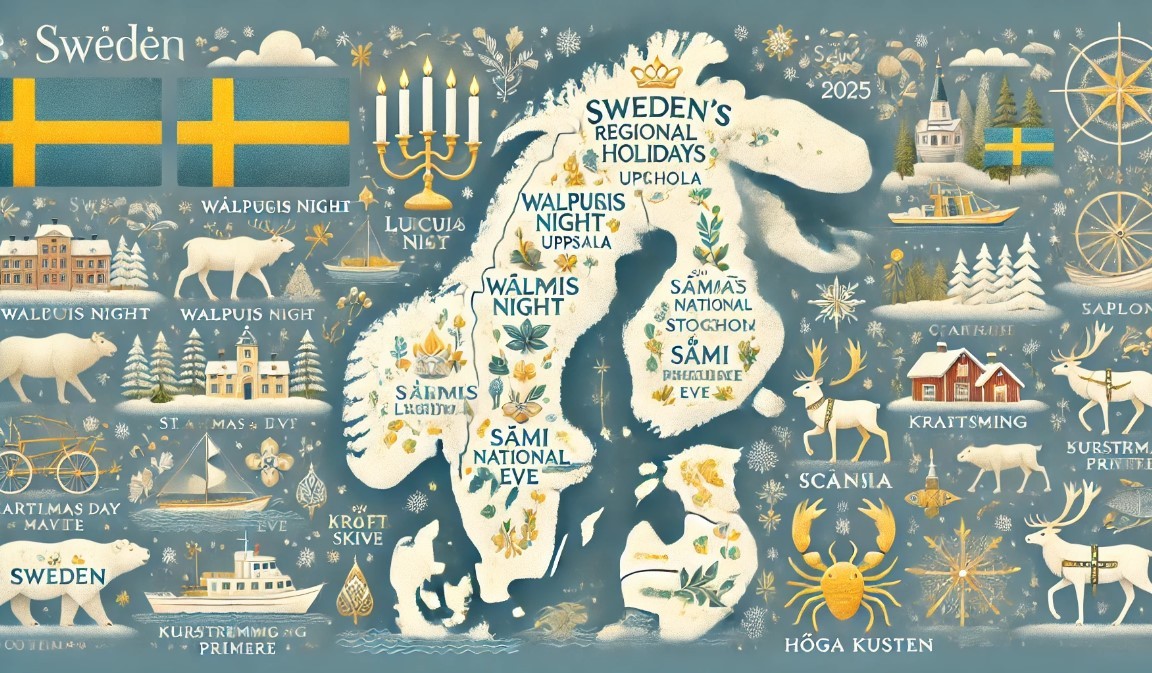What Is The Capital of Sweden: History, Facts, Best Places to See
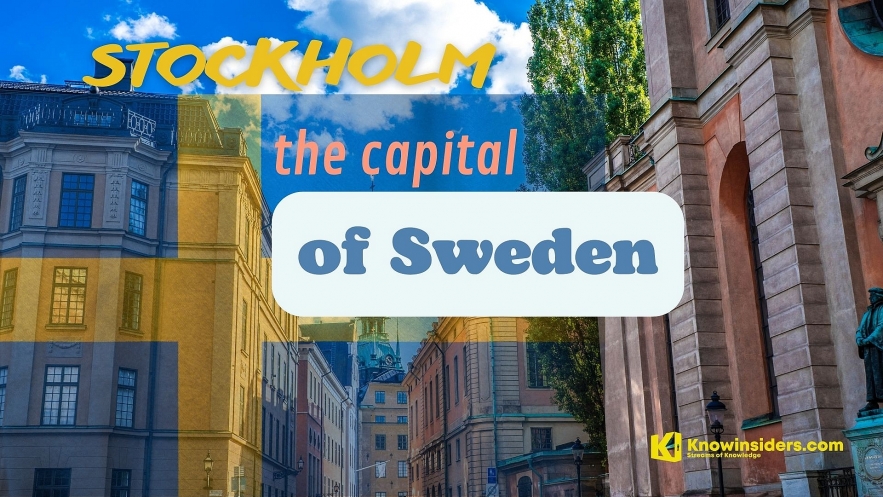 |
| What Is The Capital of Sweden: History, Facts, Best Places to See. Photo: knowinsiders. |
What is the Capital of Sweden?
How much do you know about Sweden's capital? Stockholm is known as one of the most inclusive and welcoming cities in the world. Its contemporary, urban appeal is balanced with centuries-old history and closeness to nature. Stockholm is the most attractive and cosmopolitan of Scandinavia’s capitals – and the same is true of its urbane yet fun-loving inhabitants.
Let’s start with the basics, including history, best places to go and frequently asked questions and facts about the capital of Sweden.
*****
History of Stockholm
According to Tim Lambert, cited in localhistories.org, the great city of Stockholm began in the 13th century. At that time trade and commerce were increasing across Europe and many new towns were founded. In 1252 the regent of Sweden, Birger Jarl founded Stockholm. The new town grew rapidly. In 1289 it was described as the largest place in Sweden, although it would seem very small to us. By 1500 Stockholm was a flourishing town of about 6,000 people.
Then in 1520 came the Stockholm Bloodbath. The king of Denmark invaded Sweden in 1519. In 1520 he captured Stockholm and he had more than 80 Swedish nobles executed for heresy. However the Swede Gustav Vasa recaptured Stockholm in 1523.
During the 17th century Sweden was a great power in Europe. Stockholm grew rapidly and by the end of the century it had a population of around 50,000. Riddarhuset, The House of Nobility was built between 1641 and 1674.
However, in 1710-1711, there was an outbreak of plague in Stockholm which killed many people. Yet Stockholm recovered and it flourished during the 18th century. Tullgarn Palace was built about 1720. The Royal Palace opened in 1754. The Obelisk was erected in 1799. Also in 1799, the statue of King Gustav III was sculpted.
| LIVING IN HARD TIMES When a devastating plague killed off roughly one-third of Stockholm's population in the first decade of the 18th century, things quickly went downhill, as world-guides.com reported. King Karl XII died, and the country as a whole went into a slump. Though the rest of the 18th century was a period of growth in Swedish arts and science, when King Gustav III was assassinated, the city entered another phase of disorder. Promised reforms were not delivered and bloody street riots became commonplace. |
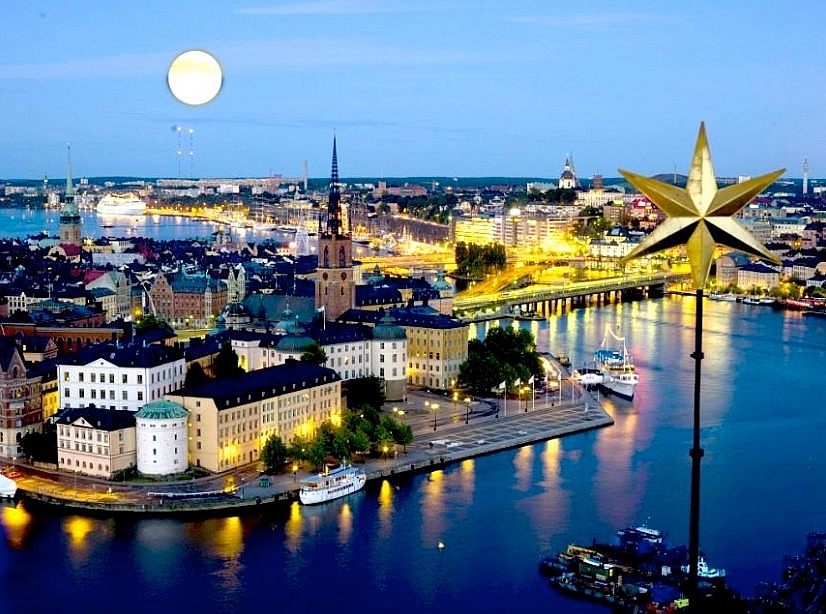 |
| Photographer: Yanan Li |
As encyclopedia.com reported, population growth stalled after 1705 as the city entered a period of stagnation, due in part to the many wars of the period; from over 55,000 in the 1680s, the population declined to about 45,000 by 1720. An outbreak of plague in 1710 also claimed a third of the population. Political changes after the death of Charles XII (ruled 1697–1718) led by the 1730s to protectionist economic policies that promoted manufacturing (especially of textiles) while restricting imports drastically. These policies tended to favor Stockholm over other parts of Sweden, which resulted in an increase in the city's population, to about 70,000 by 1760. Most of this population growth came from immigration, however, as the mortality rate in Stockholm was very high; one in three children died in the first year of life.
After 1760, political changes led to a decline in manufacturing subsidies, slowing Stockholm's development. The city lost its privileged trading status in the Baltic, and the west coast city of Göteborg began to develop as a port. Though Stockholm remained by far the country's largest city, and the only one with over 10,000 inhabitants, the percentage of Swedish citizens living in Stockholm, about 4 percent in the mid-eighteenth century, declined over the following century.
The 19th century was a much better period, as important scientific organisations were established, such as the Karolinska Institute. This wave of advancement carried on into the 20th century. The history of Stockholm during this period marks it as one of Europe's most cosmopolitan and technically advanced cities.
Though many historic districts were replaced during this modernist era, other areas emerged unscathed, including the likes of Gamla Stan, Östermalm and Södermalm. Today, Stockholm reflects this blend of its historic roots and futuristic vision, as world-guides.com reported.
Best Places to See in Stockholm
Stockholm is a city with many tourist attractions and must-see places. A trip to the capital wouldn't be complete without seeing the following attractions:
The Vasa Museum
According to sweetsweden.com, the warship Vasa sank the day it sailed in 1628. It was rescued in 1961, 333 years later. In the Vasa Museum you can admire it in all its splendor. There are guided tours available in English and you can visit Vasa Museum for free if you own a Stockholm Pass tourist card.
The Vasa Museum is located on the island of Djurgården where you also find other impressive museums in Stockholm such as the Nordiska Museet, Vikingaliv the Viking Museum, or Spritmuseum, the museum of liquor and spirits.
Skansen
According to the culturetrip, with more than 150 buildings – homes, churches, schools, shops and workshops – transported from around the country, Skansen is a miniature historical Sweden. In addition to the buildings, the world’s first open-air museum also has native animals such as bears, wolves and seals, a children’s zoo and craftspeople creating items such as blown glass and pottery on-site. This is one for the whole family, with plenty of activities to hold everyone’s attention for the entire day.
Old Town Stockholm: Gamla Stan
Dating from the 1200s and crammed with must-see sights, attractions, cafés, authentic restaurants, and boutique shops, the area of Gamla Stan (Old Town) is a living, breathing museum in its own right. For many, this is the first stop on their journey of exploration - and rightly so.
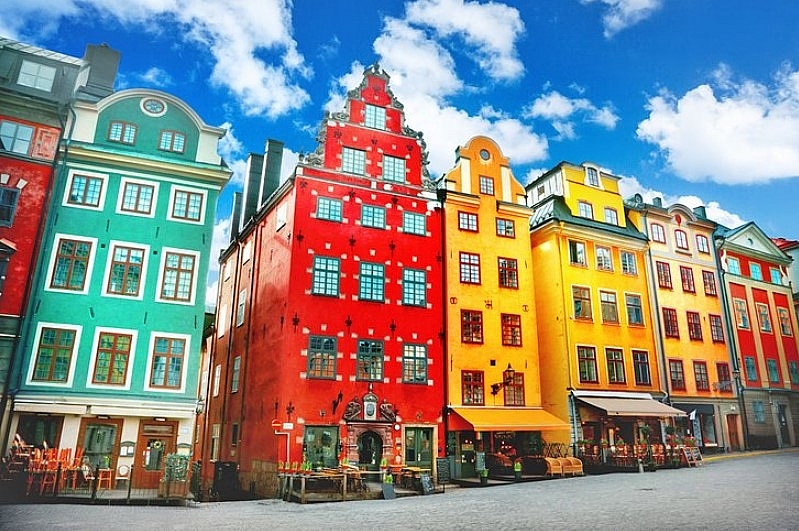 |
| Colorful buildings in Old Town Stockholm. Photo: planetware.com. |
Certainly, there's no better way to instantly absorb the feel of Stockholm and get to grips with the city's culture. Plenty of souvenirs and gifts are available in the Old Town, and you will find yourself transported back to medieval times as you meander through a bewildering labyrinth of tiny, winding streets, many of which lead to (or from) Stortorget, the main public square. Along the way, you'll discover countless mysterious vaults and ancient frescoes lurking behind picturesque facades.
If visiting in winter, be sure to take in the marvelous Julmarknad (Christmas Market), an experience akin to being in a fairy tale. Stockholm Cathedral (Storkyrkan, or Stockholms domkyrka), the Nobel Prize Museum (Nobelmuseet), and the Royal Palace are all located here and should be high up on any sightseeing itinerary. If visiting the Royal Palace — also known as Stockholm Palace — be sure to catch the changing of the guard.
Millesgarden
An artistic couple, painter Olga Milles and her husband, sculptor Carl Milles, gave Stockholm their home Millesgarden, now an art museum and sculpture garden, and the place where they’re buried. As touropia reported, filled with great paintings and magnificent sculptures, the home itself is a work of art with terraces, stairways, fountains and lush gardens. The site also contains an open-air studio built to accommodate Carl Milles’ breathing problems created by sculpting dust. All this beauty is located on Lidingo island just 20 minutes away from downtown Stockholm.
Moderna Museet
Located on the incredible island of Skeppsholmen, Moderna is home to an excellent collection of Swedish (and international) modern and contemporary art – think Picasso and Giacometti. It also hosts numerous exhibitions, such as the recent visit by celebrated performance artist Marina Abramović. Several excellent restaurants and an absolutely amazing gift shop round out the offering.
Skansen Open-Air Museum
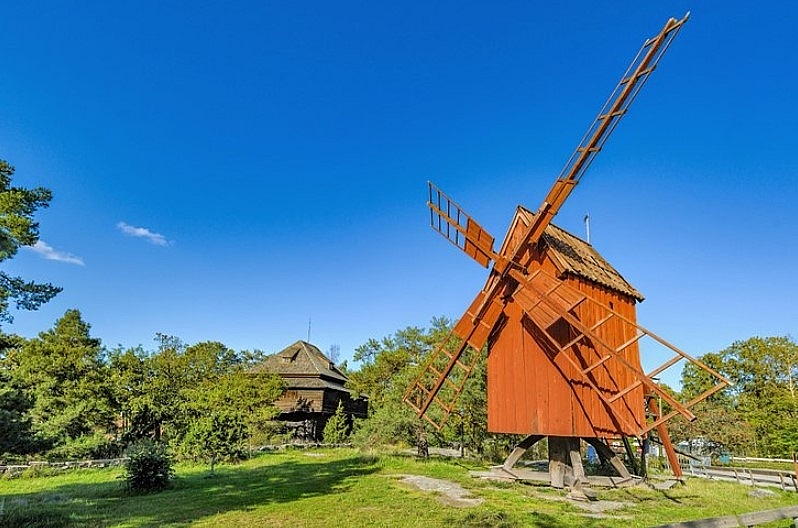 |
| Windmill at Skansen Open-Air Museum. Photo: planetware.com. |
The oldest open-air museum in the world, Skansen opened in 1891 on the island of Djurgården and is a wonderful attraction for families, particularly those with young children. Not only will you be treated to an authentic taste of Sweden as it once was, but also the wonderful Skansen Aquarium and the Children's Zoo.
More than 150 different buildings and houses were collected from all around the country and reassembled here. On display are distinct town districts, including manor houses, a bakery, the beautiful Seglora timber church, and a pottery, all brought to life by costumed staff. At the zoo are moose, bears, lynxes, wolves, and seals.
You can visit the aquarium for an extra fee and see more than 200 different animals from around the world, including many species of monkeys. For traditional Swedish Smörgåsbord pay a visit to the Solliden Restaurant.
Abba Museum
According to thrillophilia.com, not many might be aware of this but some of the biggest fans of the music band, ABBA come from Sweden. Well, the main reason behind this can be attributed to the fact that ABBA themselves are Swedish. ABBA established a museum of their own back in May 2013.
Since then, thousands flock every year just to visit this interactive exhibition against the contemporary setting of Djurgarden. Get to know the band a bit better and you will also receive the opportunity to check out some of the exhibits such as Benny’s Piano the Waterloo, the Polar Studio and Ring Ring to name a few.
Location: Djurgårdsvägen 68, 115 21 Stockholm, Sweden
Best time to visit: 9 am to 5 pm
Entry Fee: 185 SEK
Fotografiska
Fotografiska is Stockholm's museum of contemporary photography and hosts an eclectic mix of exhibitions throughout the year. The complex encompasses a cafe, restaurant, store, and gallery, and from the top floor, you can enjoy one of the most enviable views over the city.
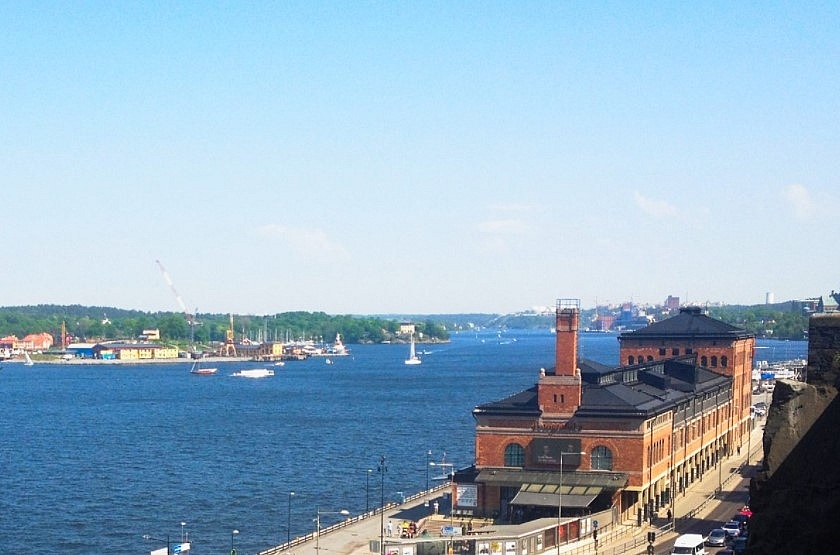 |
| Fotografiska Museum in Stockholm Photo: Israel Ubeda / sweetsweden.com |
In recent years, the museum has seen a huge increase in visitor numbers and is now acknowledged as one of the world's premier photography venues. Serving organic, sustainably-produced cuisine, the restaurant on the top floor is acclaimed as one of the city's coolest eateries (weekend brunch is particularly popular with locals). The gallery also hosts cutting-edge live and club music throughout the year.
Address: Stadsgårdshamnen 22, 11645 Stockholm
Kungliga Slottet
Kungliga Slottet is the official residence of the Swedish royal family though its only used for official ceremonies and open to the public, touropia reported. With more than 600 rooms on seven floors, it is one Europe’s largest palaces. Nothing cozy about this place! Designed in the early 18th century and modeled after a Roman palace, the palace houses the royal family’s work space, halls for state functions and the Royal Court of Sweden. The palace also is home to three museums: Treasury, a museum of antiquities and the Kroner Museum, named for an earlier medieval palace.
Skyview
You’ll experience the best views in town from heart-stopping heights when you ride to the top of the world’s largest spherical building, Globe, in a glass gondola. The trip takes about 30 minutes and at the top you’ll take in 360-degree views of the city. Globe is home to some great shops and restaurants, and is one of the premier event venues in Stockholm.
The Royal Palace
The Royal Palace, also known as the Stockholm Palace is the heart of Stockholm. It is the official home of the Swedish monarch, where King Carl XVI Gustaf and Queen Silvia once resided. It also consists of the King’s office as well as members of the Swedish Royal Family.
There are a lot of activities that you can indulge in, during your visit here including checking out the Royal Court of Sweden, the Gustav III’s Museum of Antiquities, the Tre Kronor Museum and even getting an opportunity to meet up with the Royal Guards.
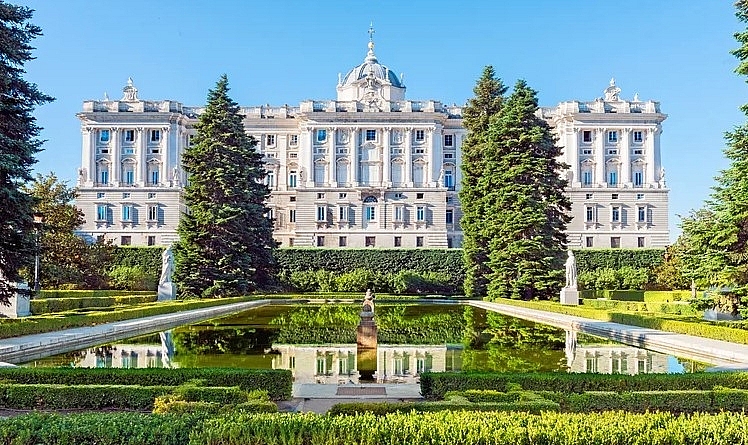 |
| Photo: thrillophilia.com. |
Location: Kungliga slottet, 107 70 Stockholm, Sweden
Best time to visit: 10 am to 4 pm
Entry fee: 160 SEK
Interesting Facts about Stockholm
Here are some intesting facts that we summed up from theculturetrip, mentalfloss, nordicexperience.com and factcity.com
World’s First National City Park
The area covering Ulriksdal, Haga, Brunnsviken and Djurgården is the world’s first national city park, and it includes museums, entertainment, four palaces and Stockholm University. What makes it even more special is that it’s right in the heart of the city.
The name Stockholm
The name Stockholm comes from the words stock meaning "log" and holm meaning "islet." No one seems to know exactly how the town got its tag; one account claims that Vikings trying to determine the location of their new settlement used a log bound with gold, while others point to the masses of logs driven into the waters near Old Town.
World’s Largest Hemispherical Building
Ericsson Globe, located just south of Stockholm’s Södermalm district, is the world’s largest hemispherical building. It has a diameter of 110 metres, the volume is 605 thousand cubic metres, and the inner height is 85 metres. You can see it from pretty much anywhere in Stockholm.
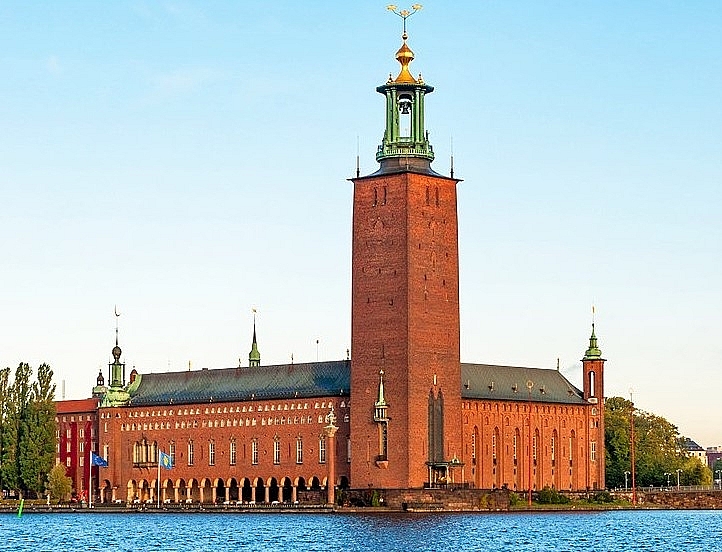 |
| The City Hall (Stadshuset). Photo: planetware. |
The Narrowest Street
Gamla Stan is full of tiny cobblestoned streets, but the tiniest of all is Mårten Trotzigs Gränd, which is just 90cm wide. It’s also a steep – if short – hill, with 36 steps taking you from top to bottom.
Venice of the North
The city is sometimes referred to as ‘Venice of the North’, thanks to its beautiful buildings and exquisite architecture, abundant open water and numerous parks.
One of the world’s cleanest metropolises
The total absence of heavy industry makes Stockholm one of the world’s cleanest metropolises.
Lots Of Cyclists
More than 70 thousand Stockholmers take to their bikes each day. Even better is that there are dedicated bike lanes throughout the city, and rarely is there a collision between cyclists and cars.
Longest life expectancy
Swedes have the longest life expectancy in Europe at 82.31 years (2017).
The world’s longest art gallery
Stockholm is also home to the world’s longest art gallery, boasting 90 of its 100 stations over 68 miles of track along with Stockholm’s subway stations which are decorated with mosaics, paintings, sculptures, and carvings.
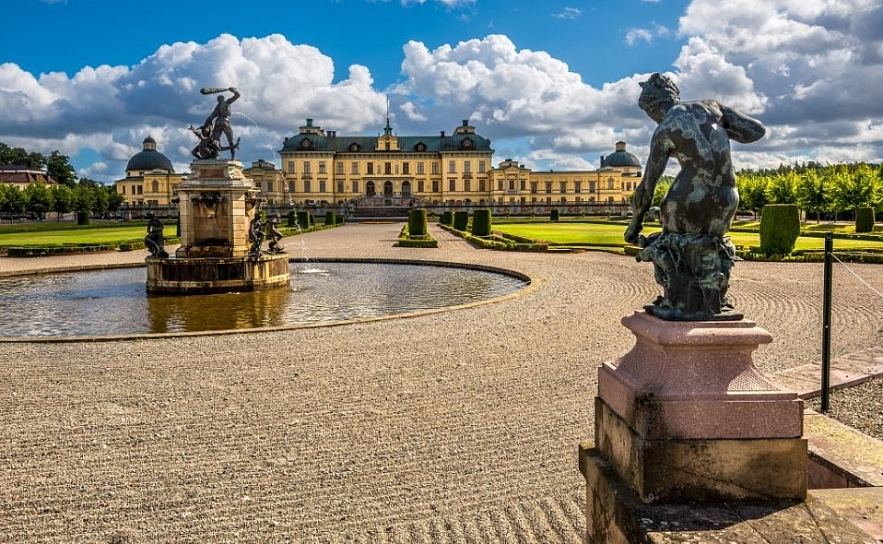 |
| View over Drottningholm palace in Stockholm, Sweden. Photo: nordicexperience.com. |
Clean Water
Stockholm sits on 14 islands that are connected by 57 bridges, and the water is so clean you can drink it, swim in it and even fish in it.
UNESCO World Heritage sites
Stockholm houses two UNESCO World Heritage sites – the Royal Palace Drottningholm and the The Woodland Cemetery.
| Frequently Asked Questions about Stockholm How do I get there? According to escape.com, there are no direct flights from Australia to Stockholm, but Qantas and Emirates fly via Dubai from Adelaide, Brisbane, Melbourne, Perth and Sydney – with a journey time of about 24 hours. Other options include Air China via Beijing (from Melbourne and Sydney), Qatar Airways via Doha (from Adelaide, Melbourne, Perth and Sydney), and Thai Airways via Bangkok (from Brisbane, Melbourne, Perth and Sydney). Low-cost flights with Norwegian Air Shuttle and Ryanair connect Stockholm to most European capitals. Where to eat in Stockholm? Sweden’s gift to gluttony is the smorgasbord – a buffet of hot and cold dishes that in its homeland includes gravlax, meatballs and pickled herring. More sophisticated cuisine can be jaw-droppingly expensive, so keep an eye out for lunchtime deals called “dagens ratt”, or visit a new “backpocket” bistro – affordable offshoots of fine-dining restaurants. Mother is a good example of the type; it opened this year inside a large former industrial space and offers healthy mains from $15. Which season is best to visit? The best time of the year is June to August, when temperatures reach the mid-20Cs and the sun sets for just an hour or two each night. Swedes revel in their short summers, when their cities bloom with outdoor activities and people sail from Stockholm to the nearby archipelago. It’s rainy in spring and autumn, but winter – though bracingly cold – can be huge fun. Snow envelops the Old Town, bars and restaurants glow with candlelight and open fires and the Christmas markets are refreshingly homely. Which part of the city should I stay in? The Old Town is good for atmosphere, but a hotel away from the main pedestrian Vasterlanggatan is better for quiet evenings. Over on the Blasieholmen peninsula, the Grand Hotel is the most opulent hotel in town. It was built in 1874, has harbour views and two Michelin-starred restaurants. Nearby, the Berns is a swish modern hotel (and nightclub) inside a handsome 19th-century shell. In the fashionable Vasastaden district, the Hellsten Hotel uses ethnic art and mood lighting in its splendid bar and breakfast conservatory. Any local customs I need to know about? Most Swedes speak perfect English, but they appreciate it if visitors don’t assume that – so learning a few words of Swedish works wonders. It’s a latitude thing, but you’ll notice that Swedes can sometimes be on the quiet side – our awkward silence is the local’s pleasant pause. Oh, and don’t say that you support the Finnish ice hockey team, even in jest. |
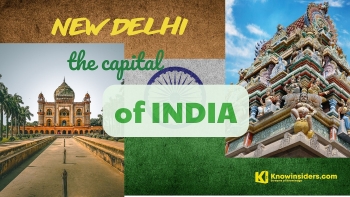 What is The Capital of India: History, Facts, Best Places to See What is The Capital of India: History, Facts, Best Places to See India's capital serves up an astounding cornucopia of history, culture, cuisine, commerce and street life, with countless sights and activities to keep visitors thoroughly engaged. ... |
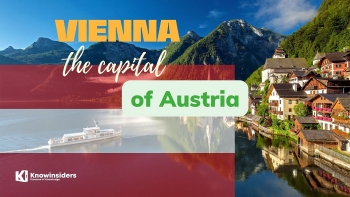 What Is The Capital of Austria: History, Facts, Best Places to See What Is The Capital of Austria: History, Facts, Best Places to See What is the Capital of Austria? A city that inspires with the old and the new alike, and always has a cosy place available in ... |
 What Is The Capital of New Zealand: History, Facts, Best Places to See What Is The Capital of New Zealand: History, Facts, Best Places to See Wellington is the capital city and second most populous urban region of New Zealand. We rounded up all things you need to know about its ... |

